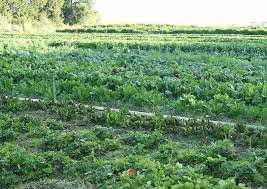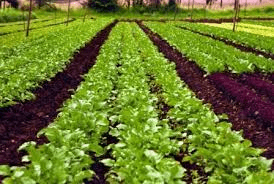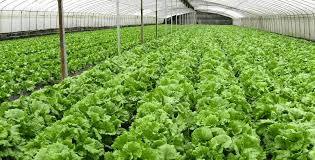Organic agriculture is a holistic approach to farming that emphasizes sustainability, environmental health, and ethical practices. Unlike conventional farming, which often relies on synthetic chemicals and industrial methods, organic agriculture focuses on natural processes to maintain soil fertility, control pests, and produce healthy crops. This method of farming aims to work in harmony with nature, promoting biodiversity and reducing pollution.
At its core, organic agriculture is guided by a set of principles that prioritize ecological balance and the well-being of the entire farming ecosystem. One of the foundational principles is the use of natural inputs and processes.
Organic farmers avoid synthetic pesticides, herbicides, and fertilizers, opting instead for natural alternatives. Compost, green manure, and crop rotation are commonly used to enhance soil fertility and structure. These practices help maintain a healthy, living soil that supports robust plant growth and reduces the need for artificial inputs.
Another key aspect of organic agriculture is biodiversity. Organic farms often feature a variety of crops, animals, and beneficial organisms, creating a balanced ecosystem. This diversity helps control pests and diseases naturally, reducing the reliance on chemical interventions. For example, planting a mix of crops can attract beneficial insects that prey on harmful pests, while diverse plantings can improve soil health and resilience.
Soil health is a central focus in organic farming. Organic farmers use techniques that enhance soil organic matter, which improves soil structure, water retention, and nutrient availability. Practices such as cover cropping, reduced tillage, and the addition of organic matter help build and maintain fertile soils. Healthy soils not only support productive crops but also contribute to the overall sustainability of the farming system.
Organic agriculture also promotes animal welfare and ethical practices. Animals on organic farms are typically raised in more natural conditions, with access to outdoor areas and a diet that meets organic standards. This approach supports the health and well-being of the animals and ensures that they are treated humanely.
In addition to environmental and ethical considerations, organic agriculture often emphasizes local and community-focused food systems. Organic farms frequently sell their products through farmers’ markets, community-supported agriculture (CSA) programs, and local grocery stores. This direct connection between farmers and consumers fosters a sense of community and helps support local economies.
The benefits of organic agriculture extend beyond the farm. Organic farming practices can lead to improved water quality, reduced pollution, and enhanced resilience to climate change. By avoiding synthetic chemicals and focusing on sustainable practices, organic farmers contribute to a healthier environment and a more sustainable food system.
Despite its many advantages, organic agriculture also faces challenges. Organic farming can require more labor and management compared to conventional methods, and organic products can be more expensive for consumers. However, the long-term benefits of organic agriculture, including its positive impact on the environment, public health, and local economies, make it a compelling alternative to conventional farming practices.
Organic agriculture represents a comprehensive approach to farming that prioritizes environmental health, sustainability, and ethical practices. By focusing on natural inputs, biodiversity, soil health, and animal welfare, organic farmers work to create a more balanced and resilient agricultural system. While there are challenges to overcome, the principles of organic agriculture offer a promising path toward a more sustainable and equitable food system.
Key Organic Agriculture Practices

1. Crop Rotation: Alternating the types of crops grown in a specific area each season to prevent soil depletion, reduce pest and disease buildup, and enhance soil fertility.
2. Cover Cropping: Planting cover crops such as clover or rye during off-seasons to improve soil structure, increase organic matter, fix nitrogen, and prevent erosion.
3. Composting: Decomposing organic waste materials like kitchen scraps, yard waste, and manure into nutrient-rich compost to boost soil fertility and microbial activity.
4. Green Manuring: Growing plants specifically to be incorporated into the soil to enhance its organic content and nutrient levels.
5. Integrated Pest Management (IPM): Using a combination of biological, cultural, mechanical, and physical methods to manage pests in an environmentally friendly way.
6. Organic Fertilizers: Applying natural substances such as compost, manure, bone meal, and fish emulsion to provide essential nutrients to plants.
7. Mulching: Spreading organic materials like straw, leaves, or wood chips on the soil surface to retain moisture, suppress weeds, and add nutrients as they decompose.
8. Minimal Tillage: Reducing soil disturbance by limiting tillage to maintain soil structure, organic matter, and beneficial soil organisms.
9. Water Conservation: Implementing efficient irrigation methods like drip irrigation to conserve water and provide consistent moisture to plants.
10. Polyculture and Companion Planting: Growing multiple plant species together to enhance biodiversity, support beneficial insects, and reduce pest and disease incidence.
Organic Agriculture: Benefits, Challenges, Techniques, and Comparison with Conventional Agriculture
1. Benefits of Organic Agriculture
1. Environmental Health: Organic agriculture promotes environmental sustainability by avoiding synthetic chemicals, reducing pollution, and conserving biodiversity. It relies on natural processes and materials, which help maintain soil health, improve water quality, and protect ecosystems.
2. Soil Fertility and Health: Organic farming enhances soil fertility through practices like composting, crop rotation, and the use of green manures. These practices build organic matter, improve soil structure, and increase microbial activity, leading to healthier and more productive soils.
3. Reduced Chemical Exposure: By avoiding synthetic pesticides and fertilizers, organic agriculture reduces the risk of chemical residues in food and minimizes potential health risks for consumers and farm workers.
4. Biodiversity: Organic farms typically support a greater variety of plants, animals, and microorganisms. This biodiversity contributes to ecosystem resilience and helps control pests and diseases naturally.
5. Climate Change Mitigation: Organic farming practices, such as reduced tillage and increased soil carbon sequestration, help mitigate climate change by storing carbon in the soil and reducing greenhouse gas emissions.
6. Animal Welfare: Organic standards require that animals are raised in humane conditions, with access to outdoor spaces and organic feed. This approach ensures better living conditions and promotes animal well-being.
2. Challenges in Organic Agriculture
1. Higher Production Costs: Organic farming often involves higher costs for organic inputs, certification, and labor. The absence of synthetic chemicals and fertilizers can also result in increased labor for pest control and soil management.
2. Lower Yields: Organic farms may experience lower yields compared to conventional farms due to the reliance on natural pest control and soil fertility methods. This can be a challenge in meeting growing food demands.
3. Certification and Compliance: Obtaining organic certification can be a complex and costly process. Farmers must adhere to strict standards and maintain detailed records, which can be burdensome and time-consuming.
4. Pest and Disease Management: Managing pests and diseases without synthetic chemicals can be challenging. Organic farmers must rely on alternative methods, such as biological controls and physical barriers, which may be less effective and require more management effort.
5. Market Access and Competition: Organic products often face challenges in market access and competition. Farmers must navigate market demands, certification requirements, and competition with conventional products, which can impact profitability.
6. Knowledge and Expertise: Successful organic farming requires specialized knowledge and skills. Farmers must be well-versed in organic practices, soil management, and pest control, which may require additional training and resources.
3. Organic Agriculture Techniques
1. Crop Rotation: Organic farming utilizes crop rotation to improve soil health and reduce pest and disease pressures. By alternating crops and using cover crops, farmers enhance soil fertility and disrupt pest life cycles.
2. Composting and Organic Fertilizers: Composting and the use of organic fertilizers, such as manure and green manures, enrich the soil with nutrients and improve soil structure. These practices also enhance soil microbial activity and reduce the need for synthetic fertilizers.
3. Biological Pest Control: Organic farmers employ biological controls to manage pests, including releasing beneficial insects, using natural predators, and employing companion planting. These methods help control pest populations without synthetic pesticides.
4. Soil Conservation: Techniques such as reduced tillage, mulching, and cover cropping are used to conserve soil moisture, prevent erosion, and build soil organic matter. These practices promote long-term soil health and sustainability.
5. Integrated Pest Management (IPM): IPM combines multiple strategies to manage pests in an environmentally friendly way. This includes monitoring pest populations, using physical barriers, and implementing cultural practices to reduce pest infestations.
6. Agroecological Practices: Organic agriculture often incorporates agroecological practices, such as planting diverse crop species, creating habitats for beneficial organisms, and designing farms that mimic natural ecosystems.
4. Comparison with Conventional Agriculture
1. Input Use: Conventional agriculture relies heavily on synthetic pesticides, fertilizers, and genetically modified organisms (GMOs), while organic agriculture avoids these inputs, focusing on natural and sustainable alternatives.
2. Environmental Impact: Conventional agriculture can lead to environmental degradation through soil erosion, water pollution, and loss of biodiversity. In contrast, organic agriculture promotes environmental health by using practices that protect soil, water, and ecosystems.
3. Soil Health: Conventional farming often depletes soil nutrients and disrupts soil structure through intensive tillage and chemical use. Organic farming, however, enhances soil health by building organic matter, improving soil structure, and promoting microbial activity.
4. Yield and Efficiency: Conventional agriculture generally achieves higher yields and greater efficiency due to the use of synthetic inputs and advanced technology. Organic farming may have lower yields but emphasizes long-term sustainability and environmental health.
5. Pest and Disease Management: Conventional farming often uses chemical pesticides and herbicides to manage pests and diseases. Organic farming relies on natural pest control methods and biological controls, which may require more management but avoid harmful chemicals.
6. Certification and Standards: Conventional agriculture typically has fewer regulatory requirements compared to organic farming, which is subject to stringent certification standards and practices to ensure compliance with organic principles.
Organic agriculture offers numerous benefits, including environmental sustainability, improved soil health, and reduced chemical exposure. However, it also faces challenges such as higher production costs, lower yields, and complex certification processes. By employing various organic techniques and understanding the differences between organic and conventional agriculture, farmers can make informed decisions and contribute to a more sustainable and healthy food system.
Read Also: Worm Infestation on Ruminant Animals: Symptoms and Treatment
The Future of Organic Agriculture

1. Technological Advancements
i. Innovative Tools and Technologies: The future of organic agriculture will likely see the integration of advanced technologies that enhance productivity and efficiency. Technologies such as precision agriculture, automated systems, and advanced monitoring tools can help organic farmers optimize their practices while adhering to organic principles.
ii. Data-Driven Decision Making: With the rise of data analytics and machine learning, organic farmers will have access to more detailed and actionable insights into soil health, crop performance, and pest management. These tools can improve decision-making and resource management.
2. Improved Crop Varieties
i. Development of Organic-Compatible Varieties: Advances in plant breeding and biotechnology are expected to lead to the development of crop varieties that are better suited for organic farming. These varieties may be more resistant to pests and diseases and better adapted to organic growing conditions.
ii. Increased Resilience: Future crop varieties may also be designed to withstand climate variability and extreme weather events, enhancing the resilience of organic farming systems.
3. Enhanced Soil Management
i. Soil Health Innovations: Ongoing research into soil health will likely result in new techniques and products that improve soil fertility and structure. Innovations in composting, soil amendments, and microbial inoculants can further enhance soil quality and support sustainable organic farming practices.
ii. Carbon Sequestration: Organic farming practices, such as cover cropping and reduced tillage, will increasingly contribute to carbon sequestration efforts. This will help mitigate climate change and enhance the environmental benefits of organic agriculture.
4. Expansion of Organic Markets
i. Growing Consumer Demand: As awareness of health and environmental issues increases, consumer demand for organic products is expected to rise. This growing market will create more opportunities for organic farmers and may lead to increased support and investment in organic agriculture.
ii. Global Market Growth: The organic agriculture market is likely to expand globally, with increased adoption of organic practices in developing countries and emerging markets. This will create new opportunities for trade and collaboration within the organic sector.
5. Sustainable Practices and Circular Economy
i. Integration with Circular Economy: Organic farming will increasingly integrate with circular economy principles, focusing on minimizing waste and maximizing resource use. Practices such as recycling organic waste into compost and using renewable energy sources will become more common.
ii. Holistic Approaches: Future organic farming will emphasize holistic approaches that consider the entire agricultural system, including energy use, water management, and waste reduction. This will enhance the sustainability and efficiency of organic farming practices.
6. Policy and Regulation
i. Supportive Policies: Governments and international organizations are likely to introduce more supportive policies and incentives for organic agriculture. This may include subsidies, research funding, and regulatory support that encourages organic farming and addresses challenges faced by organic farmers.
ii. Standardization and Harmonization: Efforts to standardize and harmonize organic certification and regulations across countries will facilitate international trade and make it easier for farmers to access global markets.
7. Education and Research
i. Increased Research Funding: Investment in research and development will continue to drive innovation in organic agriculture. This includes funding for studies on pest management, soil health, and sustainable practices.
ii. Education and Training: Enhanced education and training programs for farmers will support the adoption of organic practices and improve knowledge sharing within the organic farming community. This will help farmers stay informed about the latest advancements and best practices.
8. Community and Social Impact
i. Local Food Systems: Organic agriculture will play a key role in strengthening local food systems and promoting food sovereignty. By supporting local farmers and creating shorter supply chains, organic farming can contribute to community resilience and economic development.
ii. Social Equity: The future of organic agriculture will increasingly address social equity issues, ensuring that the benefits of organic farming are accessible to all communities. This includes supporting small-scale farmers, marginalized groups, and developing countries.
The future of organic agriculture is poised for growth and transformation, driven by technological advancements, increased consumer demand, and a focus on sustainability.
Innovations in crop varieties, soil management, and market expansion will shape the trajectory of organic farming, while supportive policies and education will help address challenges and enhance the sector’s impact.
Read Also: Nutrient Requirement of Pigs and Swine Feeding Methods
Frequently Asked Questions (FAQs) About Organic Agriculture

1. What is organic agriculture? Organic agriculture is a farming method that avoids synthetic chemicals and GMOs, focusing on sustainability, soil health, and biodiversity.
2. How does organic agriculture differ from conventional farming? Organic agriculture uses natural methods to enhance soil fertility and manage pests, while conventional farming often relies on synthetic chemicals and GMOs.
3. What are the main benefits of organic agriculture? Benefits include improved soil health, reduced chemical exposure, enhanced nutrient quality in produce, increased biodiversity, and support for sustainable practices.
4. How does crop rotation benefit organic farming? Crop rotation prevents soil depletion, reduces pest and disease pressure, and improves soil fertility by alternating crops with different nutrient needs.
5. What is composting, and why is it important for organic farming? Composting involves decomposing organic matter to create nutrient-rich compost, enhancing soil fertility, structure, and microbial activity.
6. What is integrated pest management (IPM), and how does it work? IPM combines biological, mechanical, and cultural methods to manage pests sustainably, minimizing environmental impact and reliance on chemical pesticides.
7. How do organic fertilizers differ from synthetic fertilizers? Organic fertilizers are derived from natural sources and release nutrients slowly, improving soil health, while synthetic fertilizers are chemically produced and provide nutrients quickly but can degrade soil and cause environmental issues.
8. What are cover crops, and how do they benefit organic soil? Cover crops are plants grown to improve soil health by adding organic matter, enhancing nitrogen levels, and preventing erosion. They are tilled into the soil to decompose.
9. Can organic agriculture be practiced on a large scale? Yes, many large-scale farms successfully use organic methods to produce crops and livestock.
10. How can I start practicing organic agriculture? Begin by improving soil health with composting, using organic fertilizers, practicing crop rotation, and integrating pest management strategies. Educate yourself on specific practices and gradually implement them based on your farming goals.
Read Also: The Different Types of Fertilizers and How they Work

